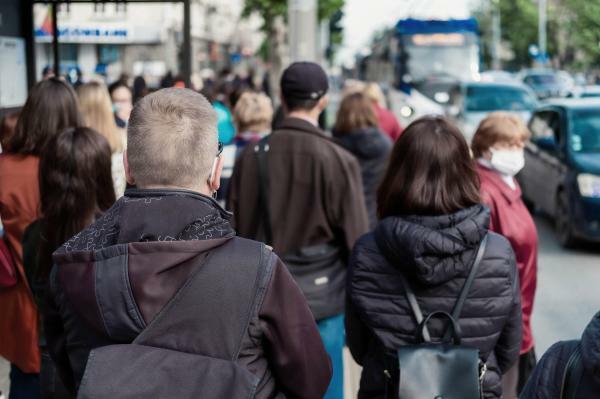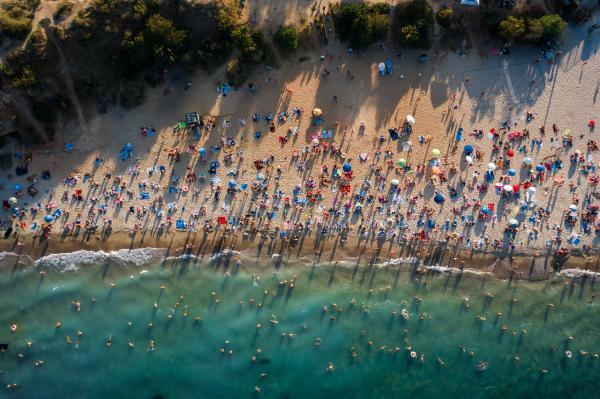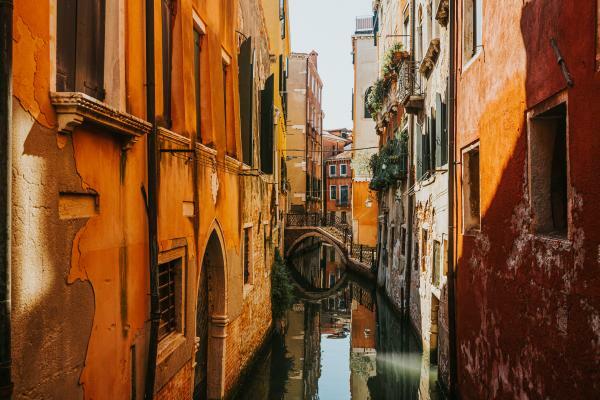
In an increasingly connected world, tourism has become a global phenomenon that can enrich our lives in many ways. However, along with the benefits, a term has also emerged that reflects the complexity of this ever-growing industry, tourismophobia.
In this Psychology-Online article we will immerse ourselves in the intriguing world of tourismophobia: what it is, causes, symptoms and examples. Next we will explore the causes, its main symptoms and we will present examples that will shed light on the psychological tensions that can arise when visiting tourist destinations.
Index
- What is tourismophobia
- What are the causes of tourismophobia
- What are the symptoms of tourismophobia
- Examples of tourismophobia
What is tourismophobia.
Tourismophobia is a term that has emerged in recent years refers to the feeling of rejection or hostility towards tourism and tourists in popular destinations. As the tourism industry grows and expands, some places face stresses and complications that go beyond the economic and cultural benefits that tourism can bring.
This phenomenon can manifest itself in various ways, from protests and negative attitudes towards visitors until the adoption of restrictive measures to limit the impact of tourism on a community.
Tourismophobia may not only be a reflection of the perception that tourism is causing local problemssuch as congestion, rising house prices, and changes in cultural identity, but may also be driven by feelings of encroachment, exploitation and inequality.
What are the causes of tourismophobia.
Tourismophobia, an increasingly common reaction in certain tourist destinations, arises from a complex intersection of socioeconomic, cultural, and psychological factors. These underlying causes can offer a deeper understanding of why some communities develop negative feelings towards tourism and visitors. The main causes of tourismophobia include:
- destination saturation: Tourist overcrowding can cause congestion in popular destinations and affect the quality of life for local residents. Crowded streets, lack of privacy, and competition for resources can lead to frustration and discontent.
- Environmental impact: unbridled tourism can cause damage to the environment, such as the degradation of natural sites and the exploitation of natural resources. In this sense, residents concerned about sustainability may feel that visitors are threatening their environment.
- Changes in cultural identity: tourism often brings with it external influences that can change the identity and traditions of a community. Residents may fear the loss of their cultural heritage and the authenticity of their lifestyle.
- Socioeconomic effects: Although tourism can boost the local economy, not all residents can benefit equally. These economic disparities between locals and those who work in the industry can breed resentment and envy.
- Lack of local participation: the lack of inclusion of residents in tourism-related decisions can lead to a feeling of powerlessness and lack of control over their own environment.
- labor exploitation: Workers in the tourism industry often face precarious working conditions and low wages. Locals may feel that tourism is benefiting businesses and not the community at large. In this article we explain How to improve the work environment.
- noise and disorder: Increased tourist activity can result in elevated noise levels, congestion, and a general cluttered environment that can negatively affect the quality of life for residents.
- Lack of respect for culture: Tourists who do not respect local cultural norms can lead to feelings of unappreciation and disrespect from residents.

What are the symptoms of tourismophobia.
The symptoms of tourismophobia are emotional and behavioral manifestations that indicate the presence of negative and hostile feelings towards tourism and tourists. These symptoms can vary in intensity and manifest in various ways, and can have a significant impact on the lives of local residents and the dynamics of tourist destinations.
Some of the most common symptoms of tourismophobia are:
- Rsentiment: residents may feel resentment and hostility towards tourists, expressing negative and contemptuous attitudes towards their presence. These feelings may stem from the perception that visitors are causing problems in the community.
- Frustration: congestion caused by a large number of tourists can generate frustration and burden on local residents. Crowded streets, traffic, and a lack of privacy can all contribute to these feelings.
- Discontent: Changes in the infrastructure and appearance of the community due to tourism can lead to discontent among residents. These changes may include the construction of hotels, restaurants, and other tourist-oriented facilities.
- Distrust: Residents may develop a general distrust of visitors, viewing them as intruders or a threat to their way of life and culture.
- Participation in protests: tourismophobia sometimes manifests itself in the form of protests and demonstrations against tourism and visitors. These actions may include posters, banners and slogans expressing opposition to tourism.
- stress and anxiety: the constant presence of tourists and the associated tensions can cause stress and anxiety in residents, which can negatively affect their emotional well-being.
Examples of tourismophobia.
Examples of tourismophobia are concrete manifestations of negative and hostile feelings towards tourism and tourists in different destinations around the world. These examples illustrate how tourismophobia can affect local dynamics and create tensions between residents and visitors. Some prominent examples include:
- Barcelona, Spain: the significant increase in tourism in the city has increased tourismophobia among its residents, who have expressed their discontent with congestion on the streets, rising housing prices, and the transformation of entire neighborhoods to accommodate the tourists. To try to avoid mass tourism, demonstrations and protests have been carried out. On occasion, bicycles and tourist vehicles have even been vandalized in an act of resistance.
- Venice Italy: Tourismophobia in Venice has been reflected in posters and graffiti that read "Tourists, Leave!", "STOP" and "You are not welcome". Venetians have also raised concerns about the environmental degradation, congestion and inauthenticity that they feel mass tourism is causing in their city.
- Santorini, Greece: The island of Santorini has faced increasing tourismophobia due to the large number of cruise ships visiting the island. Residents have complained about the lack of real economic benefits for the local community and the negative environmental impact that mass tourism is causing.
- Machu Picchu, Peru: The iconic Inca citadel has experienced an exponential increase in tourism in recent years, leading to tourismophobia among local residents. Locals are concerned about the deterioration of historic structures and the lack of regulation of visitor access.
- Bali, Indonesia: Bali has faced tourismophobia due to environmental deterioration, rising prices and the perception that tourists do not respect local customs. Protests and demonstrations have been organized to express the discontent of the residents.

This article is merely informative, at Psychology-Online we do not have the power to make a diagnosis or recommend a treatment. We invite you to go to a psychologist to treat your particular case.
If you want to read more articles similar to Tourismophobia: what it is, causes, symptoms and examples, we recommend that you enter our category of Social psychology.
Bibliography
- council, e. (2017). Vandalism against tourism in Barcelona reaches the foreign press. The vanguard. https://www.lavanguardia.com/local/barcelona/20170801/43266673395/prensa-extranjera-ataques-antiturismo-barcelona.html
- Of r. R. L. (2021). Conflict associated with touristification: Machu Picchu and Venice. https://ri.conicet.gov.ar/handle/11336/192232
- Eph. (2016). Venice protests against tourists representing them as pigs to criticize their rudeness. The sixth. https://www.lasexta.com/noticias/internacional/venecia-protesta-turistas-representandoles-como-cerdos-criticar-mala-educacion_2016082157b9ef450cf2738f2b8d5263.html
- Ostelea Tourism Management School. (2022). Tourismophobia: what it is, causes and examples. Ostelea. https://www.ostelea.com/actualidad/blog-turismo/tendencias-en-turismo/turismofobia-que-es-causas-y-ejemplos
- Prakash, A. (2017). Santorini's tourism numbers continue to grow exponentially, but is that really a good thing? oyster.com. https://www.oyster.com/es/articles/santorinis-tourism-numbers-continue-to-grow-exponentially-but-is-that-actually-a-good-thing/
- Ramirez, X. d. (2018). What tourism does not see. pollution of Bali's rivers. iWater. https://www.iagua.es/blogs/xavi-duran-ramirez/lo-que-turismo-no
- Singuenza, M. (2023). Travelers Alert: Is Bali Safe? Discover the dangers lurking now. https://todoviajar.net/blog/es-peligroso-viajar-a-bali-ahora/
Tourismophobia: what it is, causes, symptoms and examples


